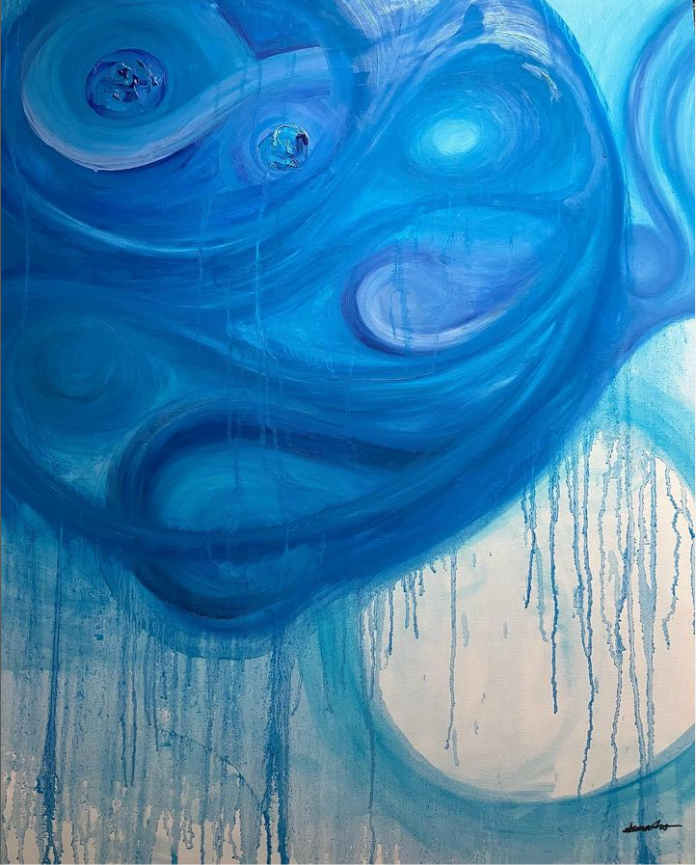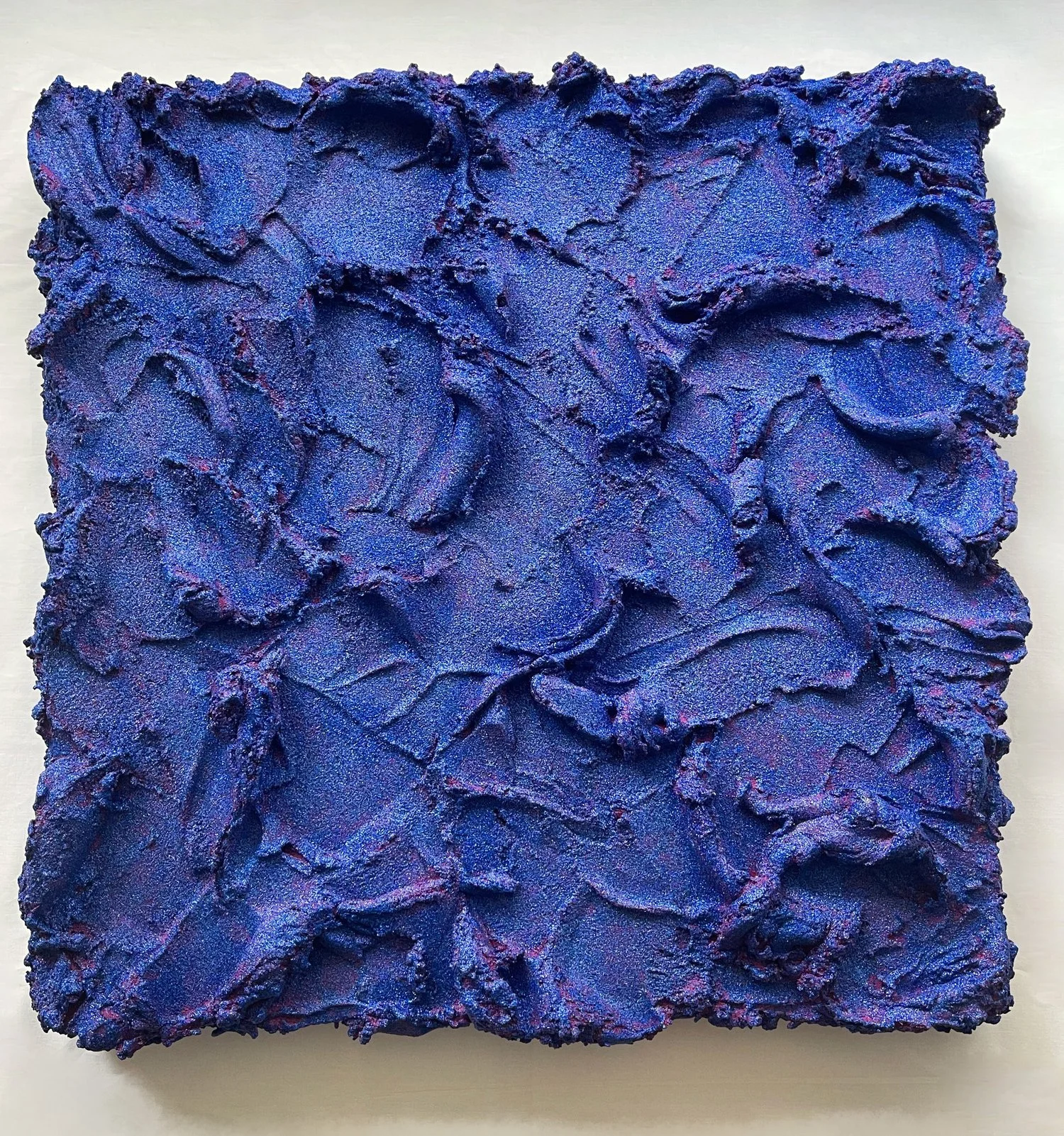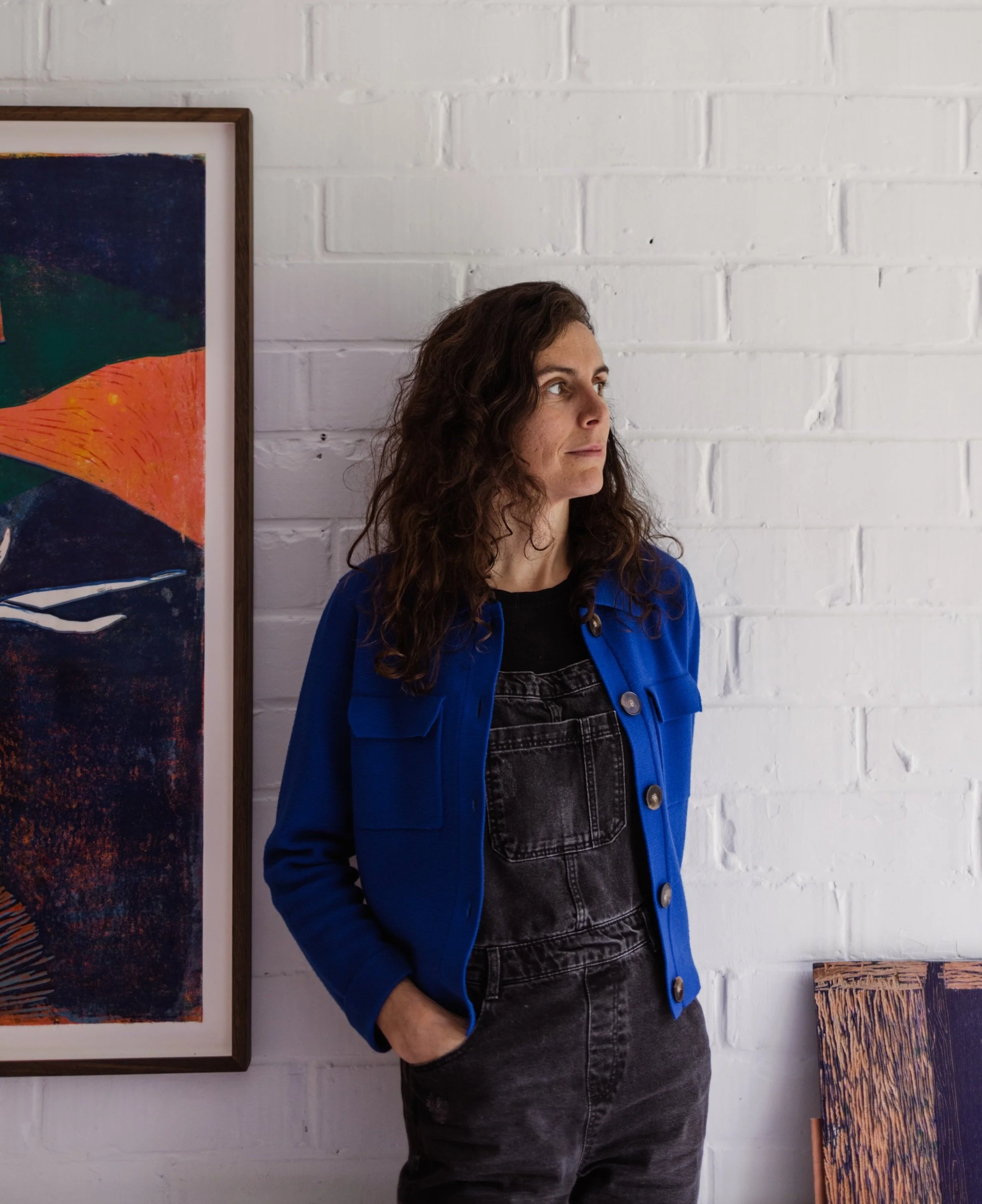10 Questions with Iona Hassanscott
Iona Hassanscott is a 21-year-old artist. She is of mixed Scottish and Egyptian heritage but was born in South Wales, where she currently lives, studying mechanical engineering full-time at university. Iona’s favorite medium is oil paint. Her work is expressive and thought-provoking - inspired by the natural world and the intricacies of human and societal behavior. Her work has been exhibited at the Creative Plug Art Gallery in Cardiff and at Volcano Arts Center in Swansea.
Iona Hassanscott - Portrait
ARTIST STATEMENT
“I often do not know what I will make when I start a piece of art. My creative process usually starts whenever I feel a strong emotion – which explains why much of my work is flowing and colorful. I am Autistic and have experienced the symptoms of PTSD for several years. Through my art, I seek to communicate words I cannot articulate, anger that I have suppressed, and pain that cannot be expressed. I paint to connect myself to the world and the world back to itself. I think disconnection is a very big problem in the world, and many people seek unhealthy ways to reconnect, disconnect, or fill a void that we create. When I paint, I go into that void, and by allowing myself to be present in my emotions, I can reconnect and heal.”
— Iona Hassanscott
Distortion, Oil paint, 90x122 cm, 2024 © Iona Hassanscott
INTERVIEW
First, can you tell us about your background? Does your mixed Scottish and Egyptian heritage influence your artwork?
I think it does, but indirectly. In the past, I have felt included in some spaces and excluded in others because of my mixed ethnicity. For a long time, I wanted to fit in with everyone around me – and because I hadn't been diagnosed as being Autistic yet, it was easy to blame my 'uniqueness' on my mixed background. So, I tried to pretend I wasn't mixed race, tried to even ask my mum to cook different food or act differently when school friends came over – and eventually realised that no matter how much I tried to cover up who I was it did not make me fit in. Whether it was related to neurodiversity, my mixed ethnicity or both – I was different and that was it. Now, I am proud of the things that make me stand out. I do think this shines through in my artwork - especially when I hear people say things like, "Her art is kinda weird, but I really like it".
How do you balance studying mechanical engineering full-time at university with your passion for oil painting?
There is no secret or trick to balancing multiple passions or careers; you just do it. I ask for help when I need it and protect my energy in every way possible. I am almost selfish with my time; I take my work and the path I'm on very seriously - if I don't want to do something, I won't.
Lesley (Before), Oil paint, 40x50 cm, 2024 © Iona Hassanscott
Lesley (Final), Oil paint, 40x50 cm, 2024 © Iona Hassanscott
Your artwork is described as expressive and thought-provoking, inspired by the natural world and human behaviour. Can you share some insights into the themes and concepts you explore in your art?
After my first solo art show in November 2023, I found myself tempted to make art I thought people wanted to see - palatable, marketable, and uncontroversial. Fortunately, this didn't last long. Through talking to other creatives, I concluded that there is power in originality. This helped me to find my current style – which centres around brightly coloured patterns and women. I am working on a project called 'It Comes in Waves' right now, which is a series of oil paintings that are mostly blue. My brain is working hard to work through my trauma – which I aim to show with flowing waves that remind me of how I think my brain waves would 'look'. I would describe my art style as a process of constant change and development. I am constantly changing and developing, but at my core, I remain the same. My art follows a similar path.
As someone who is autistic and living with PTSD, how does your personal experience shape the emotions and messages conveyed in your artwork?
Like many autistic people, I find communication challenging – especially when the people I keep trying to communicate with continuously disregard, misunderstand or dismiss me. When I am overwhelmed, I sometimes become non-verbal/mute. Being unable to communicate in these situations creates a disconnect between me and the rest of the world. Making art helps me to bridge that gap and reconnect. Through art, I can express myself in a non-verbal way without feeling unheard or silenced. Producing work which so accurately reflects how I feel inside makes me feel empowered and peaceful, and helps me to learn more about myself.
Dreams and Nightmares, Oil paint, 40x50 cm, 2023 © Iona Hassanscott
Can you walk us through your creative process when working with oil paint? Do you have any specific techniques or rituals that you follow?
Unless it is commission-related, I don't usually know what I will paint when I start a piece of art. I choose a colour scheme and sometimes stick to it, other times painting over it completely with a different colour and starting again. I like burning incense or candles and listening to music while I paint. I think my best works of art are the ones I take the most time over – waiting for some parts to dry, experimenting with different textures, and just taking the time to stand back and reflect on what I am creating. Right now, I love listening to Mariah the Scientist, Jhene Aiko, Cleo Sol, and Summer Walker while I paint.
How do you hope viewers will interpret or connect with your art, particularly regarding the emotions and experiences you seek to communicate?
I want you to feel connected to the things humanity seeks to escape from. I want to address the experience of women and the internal dialogue we have about power, violence and accountability. I want to give a voice to the silenced, uplift the vulnerable and empower the powerless. But I do wish to highlight collective mindsets and systems in the world, which are perpetuated by complacency and a lack of action. As much as I want to make some people feel peaceful through my art – I think some of you do need to feel uncomfortable.
Are there any specific pieces of your artwork that hold significant meaning to you, and if so, what inspired them?
Firstly Regeneration – this piece of art symbolises a change of mindset and life situation for me. I finally began to surrender to it all, to let go of the pain I was holding so tightly to. I think that sometimes when we start to get better, we end up self-sabotaging because peace is unfamiliar. I rejected this trauma bond, accepted the truth that I deserve better and will get better. I regenerated.
Lesley is the second one I would like to talk about. In the song 'Lesley' by Dave ft Ruelle, a story is told about a woman named Lesley who is in an abusive relationship with a man named Jason. Dave ends the song with 'On that train full of people that you're takin', how many Lesley's are running from their Jasons?'. Exploring the issues in this song through my art felt like I was finally communicating to people what we are often taught to remain silent on – but without actually talking about it.
Regeneration, Oil paint, 40x50 cm, 2023 © Iona Hassanscott
Waves, Oil Paint, 90x122 cm, 2024 © Iona Hassanscott
Can you share any details about your future projects or upcoming artworks that you're currently working on?
I am working on cover art, on the project/series of paintings I mentioned earlier 'It Comes in Waves', and on a poetry book. I am also working on applying to and taking as many creative related opportunities as possible!
As an artist, what are some of your long-term goals or aspirations?
I want to continue collaborating and making more connections with creatives. I'd love to have my art exhibited throughout the UK and one day globally. I want to expand to and reach different audiences so that my art can be as impactful as possible. I dream of using any power I attain in my career to shatter power dynamics/systems that make the powerless weaker and the terrified more vulnerable. Oh, and I'd also love to have my own art studio one day! It would be so nice to have a space or room in my house dedicated just to my art.
Beyond art and mechanical engineering, are there any other interests or hobbies that you enjoy in your free time?
I am a 60/100m sprinter for my university. Training 4x a week for two and a half hours helps me to stay focused and to put it bluntly; it helps me to stay sane. It teaches me the importance of discipline and rest, which I love. Running and painting are two of the few things which put me into a flowing state of mind where I am totally present and feel fully conscious. I do acrylic nails, too, which is a wonderful way for me to express my creativity in a different area, make some money, and spend time with more women. My degree is 92% male, so I am grateful for this time. I also love spending time with my friends and family. I read a lot, watch weird YouTube videos about technological developments and maths, and spend way too much time on Pinterest. I also like Sudoku, gardening, cooking, and daydreaming. I like giving myself time to pray, meditate, and do nothing – so that when I choose to do something I am more focused.
Artist’s Talk
Al-Tiba9 Interviews is a promotional platform for artists to articulate their vision and engage them with our diverse readership through a published art dialogue. The artists are interviewed by Mohamed Benhadj, the founder & curator of Al-Tiba9, to highlight their artistic careers and introduce them to the international contemporary art scene across our vast network of museums, galleries, art professionals, art dealers, collectors, and art lovers across the globe.





















